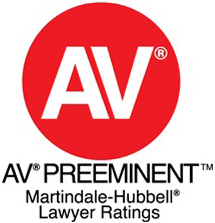Introduction
If an owner of an aircraft leases the aircraft to another, who then causes property damage or personal injury while using it, it would not seem fair to hold the owner/lessor liable. However, prior to 1994 an aircraft owner/lessor could be held responsible under this scenario. And, plaintiffs, prior to this date would routinely join the owner/lessor as a defendant, partially because the lessor/owner may have deeper pockets than the lessee who actually caused the loss.
Federal statute, 49 U.S.C. § 44112(b) (“the Statute”), enacted to address this very issue, provides immunity to aircraft lessors who, at the time of damage or injury, do not have actual possession or operational control of the leased aircraft. In 2018, this lessor immunity statute was amended to clarify the statute’s application, to make the case of immunity for aircraft lessors even stronger. This Article will review Section 44112(b)’s requirements, exceptions and amendments to provide guidance to owners and lessors so that if and when an accident occurs, they can invoke the immunity this Statute provides.
49 U.S.C. § 44112(b) Prior to Amendment
On July 5, 1994, Congress enacted 49 U.S.C. § 44112(b) which provided, in relevant part:
“Liability. A lessor, owner, or secured party is liable for personal injury, death, or property loss or damage on land or water only when a civil aircraft, aircraft engine, or propeller is in the actual possession or control of the lessor, owner, or secured party, and the personal injury, death, or property loss or damage occurs because of—
(1) The aircraft, engine, or propeller; or
(2) The flight of, or an object falling from, the aircraft, engine, or propeller.”
(emphasis added)
The statutory wording “on land or water” initially caused some confusion. Did the Statute apply only if the injury actually occurred “on land or water,” external to, but not on board, the aircraft? Due to this ambiguity courts not surprisingly were split on whether this federal statute pre-empted state law when the damage or injured party was on board the aircraft. Some state courts held that § 44112(b) was limited in application to when the damages were on land or water to persons or property outside the aircraft. (This was initially confusingly described as “underneath the aircraft during its flight, ascent or descent.” Vreeland v. Ferrer, 71 So. 3d 70, 80 (Fla. 2011)) Other state courts extended immunity to those on board the aircraft as well as “underneath” the aircraft. See Id.; Sexton v. Ryder Truck Rental, Inc., 320 N.W.2d 843 (Mich. 1982); Storie v. Southfield Leasing, 282 N.W.2d 417 (Mich. 1979) (all holding that the federal statute did not have preemptive effect when the injured parties were on board the aircraft, rather than on the ground below the aircraft).
49 U.S.C. § 44112(b) After Amendment
On October 5, 2018, Congress enacted the Federal Aviation Administration Reauthorization Act to clear up this confusion regarding where the injured parties must be located. The amendment eliminated the phrase “on land or water” from the Statute. Section 514 of this Act (titled “Aircraft Leasing”) amended 49 U.S.C. § 44112(b) to have preemptive effect regardless of where the injured parties are located, whether inside or outside the aircraft. The federal statute now clearly preempts conflicting state laws which would otherwise support the imposition of vicarious liability for the aircraft owner/lessor, wherever the damage occurs.1
The statute as amended now reads:
“Liability. A lessor, owner, or secured party is liable for personal injury, death, or property loss or damage only when a civil aircraft, aircraft engine, or propeller is in the actual possession or operational control of the lessor, owner, or secured party, and the personal injury, death, or property loss or damage occurs because of—
(1) the aircraft, engine, or propeller; or
(2) the flight of, or an object falling from, the aircraft, engine, or propeller.”2 (emphasis added)
The other significant change that the amendment made was the insertion of “operational” before the word “control.” This further clarified that the owner/lessor will be immune from liability unless it was the party actually “operating” the plane at the time of injury. This eliminated any uncertainty that simply having theoretical control over the plane (i.e., financing it, providing fuel, scheduling it for maintenance, etc.) would defeat immunity. See In re Hudson River Mid-Air Collision, 2012 U.S. Dist. LEXIS 25149 (D. N.J 2012) (prior to the amendment, denying immunity for the lessor due to the close relationship between the lessor and lessee, even though the lessor was not operating the aircraft at the time of the crash).
The above amendments further strengthened the protections for aircraft owners/lessors as they clarify that immunity will be extended absent the exercise control over the operation (flight) and whether the damage or injury occurs on board the aircraft or elsewhere. Closing the loopholes, which the pre-amendment Statute provided, also further strengthens the owners/lessors position that the Statute shall have preemptive effect since these amendments leave little to no wiggle room for lessees to argue that the application of state laws imposing liability would be consistent with the Statute’s grant of immunity.
The Statute’s Actual Possession and Operational Control Requirements
While 49 U.S.C. § 44112(b) is somewhat broad, it is not absolute. The statute will not provide immunity for lessors who had possession or operational control of the aircraft at the time of the loss, damage, or injury.
To have “actual possession” of an object means having physical control of that object.3 In other words, the object is on your premises, within your control, and readily accessible to you. In the aircraft context, actual possession is straightforward, whereas “operational control” is potentially less so.
According to 14 Code of Federal Regulation § 1.1, “Operational control, with respect to a flight, means the exercise of authority over initiation, conducting, or terminating a flight.” Additionally, in invoking its authority pursuant to the Federal Aviation Act, the Federal Aviation Administration (FAA) issues Advisory Circulars that establish requirements, guidelines, and interpretations of its own laws and regulations. Escobar v. Nev. Helicopter Leasing, LLC, 2020 U.S. Dist. LEXIS 389890 (D. Hawaii 2020) at 6.
The FAA, in Advisory Circular 91-37B, regarding leasing and operational control, put forth several factors to assist in determining which party has operational control of the aircraft. These include whether the party in question has discretion or authority over:
a) The aircrew, by ensuring that “crewmembers are trained and qualified in accordance with the applicable regulations and remain in compliance with all applicable flight, duty, and rest requirements including designating a pilot in command (PIC) for each flight” (Advisory Circular, Para. 4.6.1);
b) The aircraft, by ensuring that the aircraft “is airworthy and is in compliance with the applicable regulations” (Advisory Circular, Para. 4.6.2);
c) Flight management, by specifying “the conditions under which a flight may be operated, such as determining weather minimums, proper aircraft loading, center of gravity (CG limitations), icing conditions, and fuel requirements”, as well as handling “the monetary and logistical issues associated with the aircrew and aircraft” (Advisory Circular, Para. 4.6.3).
Other questions that can clarify who maintains operational control over the aircraft are:
a) Who makes the decision to assign crewmembers and aircraft; accept flight requests; and initiate, conduct, and terminate flights?
b) For whom do the pilots work as direct employees or agents?
c) Who is maintaining the aircraft and where is it maintained?
d) Prior to departure, who ensures the flight, aircraft, and crew comply with regulations?
e) Who decides when/where maintenance is accomplished, and who directly pays for maintenance? (Advisory Circular 91-37B, Para. 6.3)
The answers to the above questions will factor into determining whether the owner/lessor retained operational control over the aircraft and, therefore, whether immunity will be afforded under the Statute.
Further, although the Statute itself does not specify the relevant time period for the actual possession and operational analysis, the case law has interpreted the Statute to require that the actual possession/operational control be at the time of the injury-causing crash. The precedent is clear that the relevant operational control analysis is whether a party had it at the time of the accident. See Escobar v. Nev. Helicopter Leasing, LLC, 2020 U.S. Dist. LEXIS 38980 (D. Hawaii 2020) at 4 (“The Court will instruct the jury on the definition of “operational control” and the factors that the jury shall consider in determining whether Defendant Nevada Helicopter Leasing LLC had operational control of the helicopter at the time of the accident) (emphasis added). See also, In re Inlow Accident Litig., 2001 U.S. Dist. LEXIS 2747 at 57 (“Through its requirement that a lessor must be in ‘actual possession or control’ of the aircraft at the time of the accident, § 44112 prevents the imposition of liability on lessors that are not engaged in some concrete fashion in the operation of the aircraft”) (emphasis added). This is an added protection for some owners/lessors who may have retained some control over things such as scheduling maintenance or providing fuel, but had no hand in the flight which caused the personal injury or property damage.
The 30-Day Requirement
Lastly, it must be noted that to confer immunity, the Statute requires that the owner have leased the aircraft for at least thirty days prior to the date of loss. (§ 44112 (a)(1) states, “lessor” means a person leasing for at least 30 days a civil aircraft, aircraft engine, or propeller.”) Therefore, it is important to check the precise circumstances of the lessor-lessee relationship in these situations. Ideally, from the perspective of an owner/lessor, there should be writings evidencing a lease agreement, dating more than a month prior to the date of the property damage or personal injury, and providing that the aircraft will be in the actual physical possession of the lessee.
Conclusion
In sum, an entity who is the owner and the lessor of an aircraft will not be subject to liability if the lessee causes damage with the aircraft, provided it meets the necessary requirements, which are threefold. First, the owner/lessor must not have had actual physical possession of the aircraft; rather, the plane must have been in the possession of the lessee. Second, the owner/lessor must not have had operational control over the aircraft at the time of the crash or accident. Lastly, ensure that the lease in question was in place for a period of at least thirty days prior to the date of the crash or accident. Actual physical possession and the 30-day lease requirement being relatively straightforward, the majority of the argument would be centered on the operational control analysis. The factors put forth in the FAA Advisory Circular and summarized in this Article should help answer that question.
If the above criteria are met, 49 U.S.C. § 44112(b) should shield the owner/lessor of an aircraft, engine or propellor from liability in both state and federal courts.





